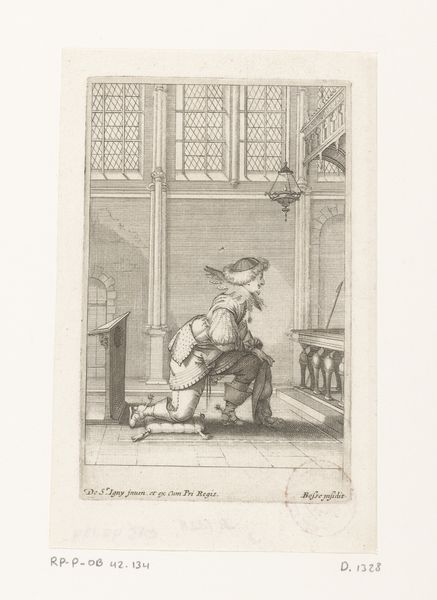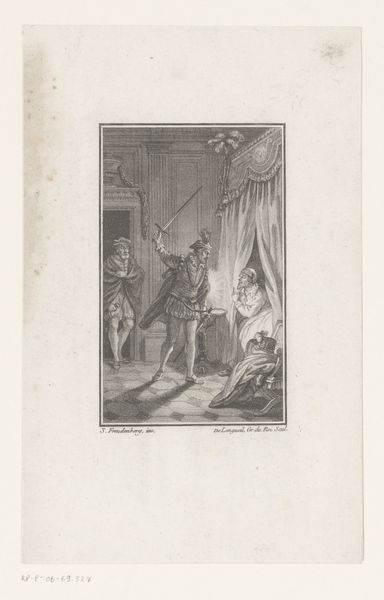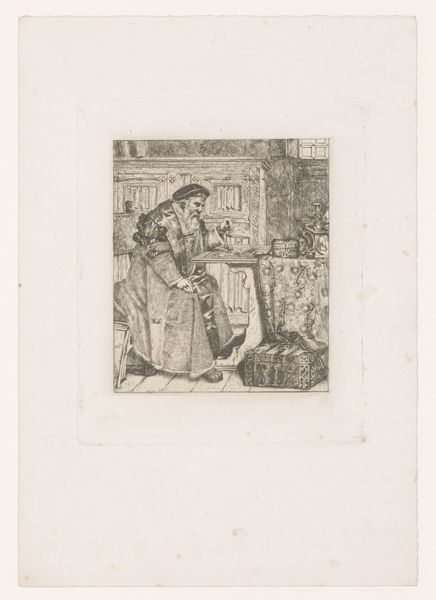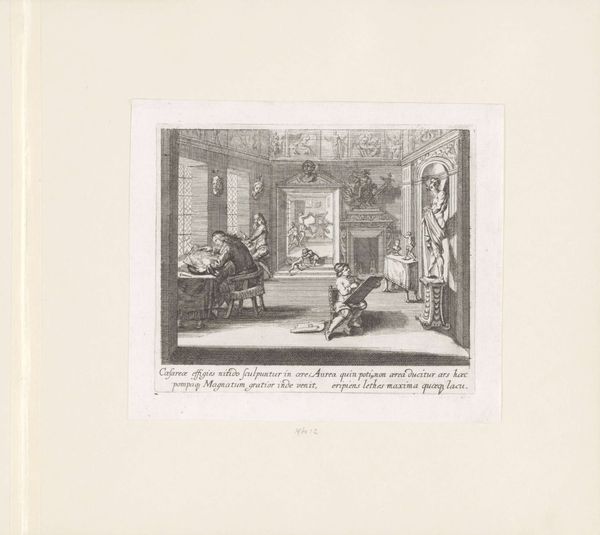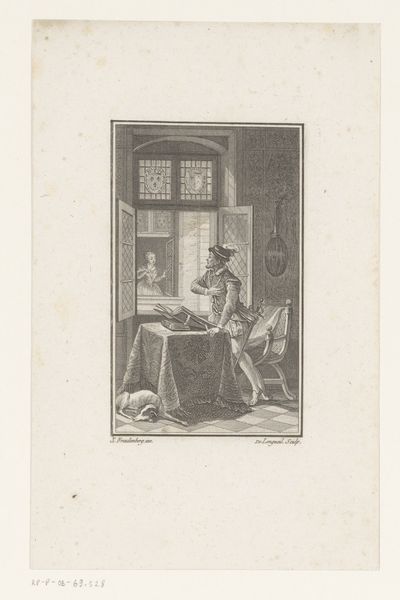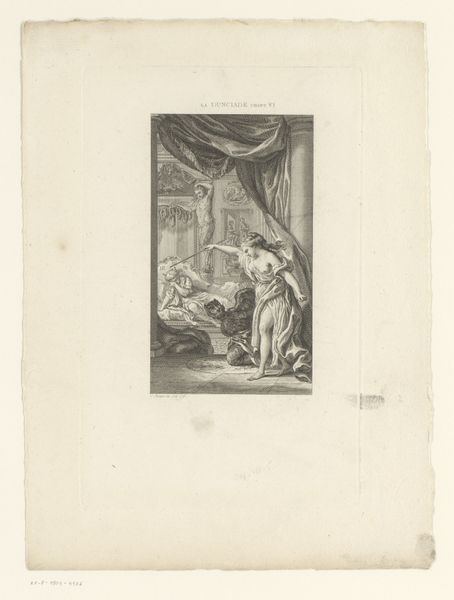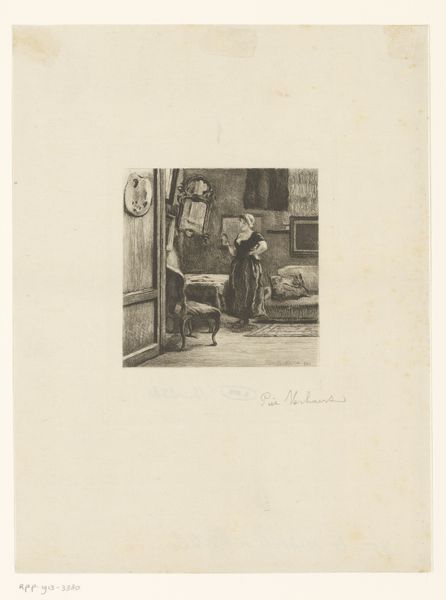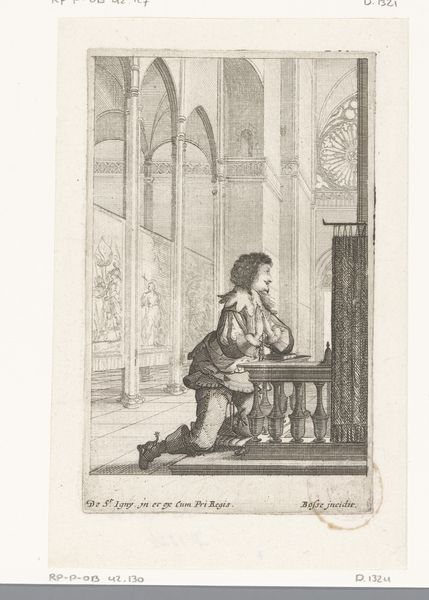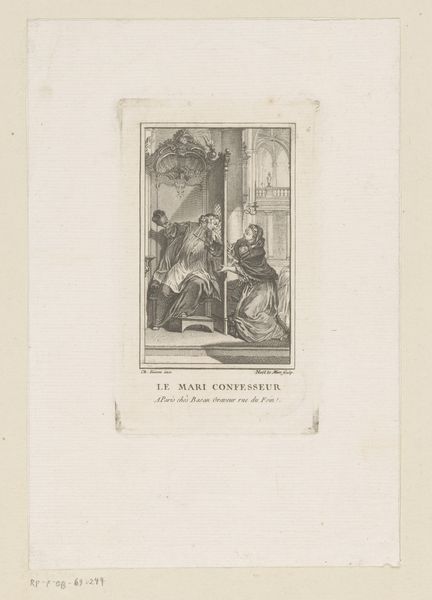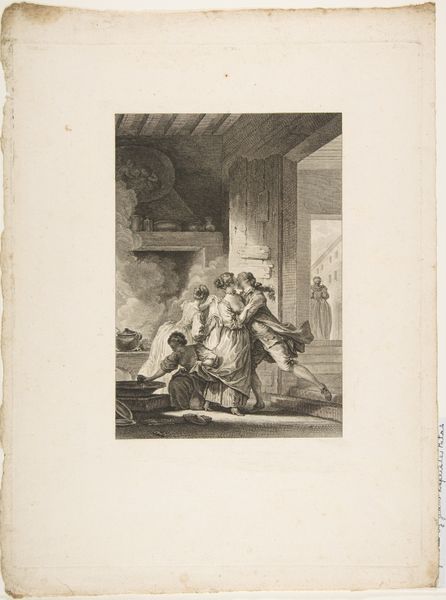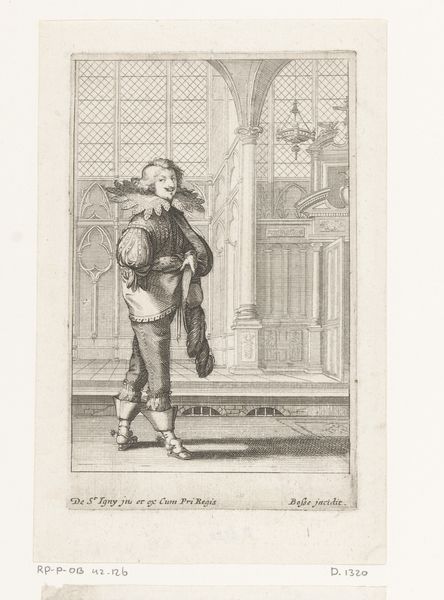
drawing, print, engraving
#
drawing
#
neoclacissism
# print
#
history-painting
#
engraving
Dimensions: 116 mm (height) x 145 mm (width) (plademaal)
Editor: Here we have "Ulykkelige hændelser nr. 3", or "Unhappy Events No. 3", an engraving by Georg Christian Schule from 1787. The scene is of a man who seems to be reacting to something on his desk. There's a neoclassical style, but the scene is strange and tense. What's your take on this piece? Curator: Indeed, it is more peculiar than the average neoclassical history painting, isn’t it? To understand it, we must examine the function and production of imagery at that time. Consider the engraving medium itself, popular due to its reproducibility, enabling the broad distribution of visual ideas to a growing public sphere. Editor: So, this wasn’t just for the elite? Curator: Exactly. Engravings often served didactic or satirical purposes. With its seemingly simple composition of a gentleman startled at his desk, this piece invites speculation about its underlying message. Is it commenting on social anxieties, perhaps alluding to the upheaval brewing in pre-revolutionary Europe? Observe his gesture—almost recoiling from what he’s looking at. Does this suggest a rejection of certain established values, or a fear of the changing times? Editor: That's interesting, I hadn’t thought about it in terms of social commentary. It makes you wonder what specific events or sentiments Schule intended to capture. The details in the room also contribute. Curator: Precisely! How do these furnishings and decorations define and perhaps constrain the individual within this historical setting? Editor: I see your point; viewing art in the context of its broader public role gives the scene new depth. Curator: Art and historical narratives often reflect prevailing social values. Analyzing works like Schule’s within their time helps us dissect and interpret the complexities of public identity in 18th-century art. Editor: This piece is way more intriguing now, I would have easily missed those socio-historical layers. Curator: The magic of museums happens when historical artworks spark dialogues that enrich our perspectives.
Comments
No comments
Be the first to comment and join the conversation on the ultimate creative platform.
